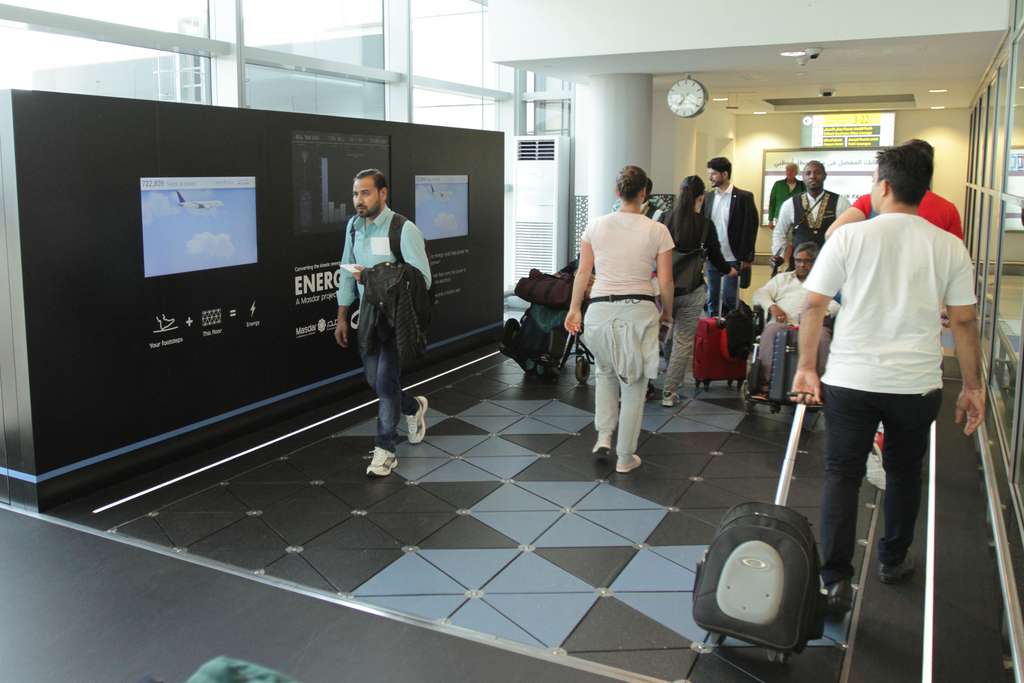The UK startup Pavegen manufactures connected pavers that generate energy through pedestrian foot pressure and retrieve data. An innovative solution for places with heavy traffic such as railway stations, airports or shopping streets.
The energy of steps to produce electricity
The pavers are 9 centimeters thick and 43 centimeters long and are made from recycled materials such as truck tires. ” Initially, our pavers were rectangular with a generator in the middle, which allowed to recover only 20% of the energy of the steps. We finally opted for a triangular shape with a generator at each corner of the triangle, “says Laurence Kemball-Cook, the CEO of Pavegen, which indicates that this new design can achieve a recovery rate of almost 100 %. Other devices can already recover energy.
In 2016, the first solar highway France has been installed in Orne by Colas. But this technology is not suited to city centers, where the streets are often in the shade of large buildings. In addition, the pavers developed by Pavegen can be used both indoors and outdoors and are extremely resistant to deterioration and bad weather.
From airports to campuses
However, it takes a lot of traffic for the device to be effective. That’s why Pavegen targets high-traffic areas such as railway stations, stadiums, or shopping streets. More than 200 permanent or temporary pavements have already been installed in 36 countries, from the Abu Dhabi airport in the United Arab Emirates to the University of Birmingham, where students can charge their laptops from connected benches powered by tiles.
In 2016, a surface of 23 square meters was installed in Washington on an intersection less than one kilometer from the White House. ” More than 10.000 people spend there every day and provide energy in the lighting of the place at night, ” says Laurence Kemball-Cook.

But Pavegen does not just produce energy. Thanks to the sensors embedded in the tiles, the startup also provides statistics on traffic and energy generated. The blocks are also equipped with Bluetooth beacon allowing users to connect via their smartphone. Each step is converted into digital currency associated for example with a loyalty program in exchange for their data. The Mercury mall in London boasts of having increased the rate of commitment on its site by 15% following the implementation of cobblestones.
A compensation system for users
In July 2019, the startup raised 2.6 million pounds (2.9 million euros) in a crowdfunding campaign with 1,400 investors, including Indian conglomerate Hinduja Group, involved in transportation, banking or television. The latter aims to build the “smart city” of the future and sees Pavegen as a new tool for a greener and more connected city. The startup has also signed a partnership with Siemens in 2018.
As with most such technologies, the biggest obstacle to large-scale deployment is the cost. An installation costs on average 123,000 euros, a price still prohibitive for many applications. ” We hope to arrive at a cost of 45 to 90 euros per square meter,” says Kemball-Cook for Forbes magazine. But after 10 years of development, profitability is still far from being at the rendezvous.